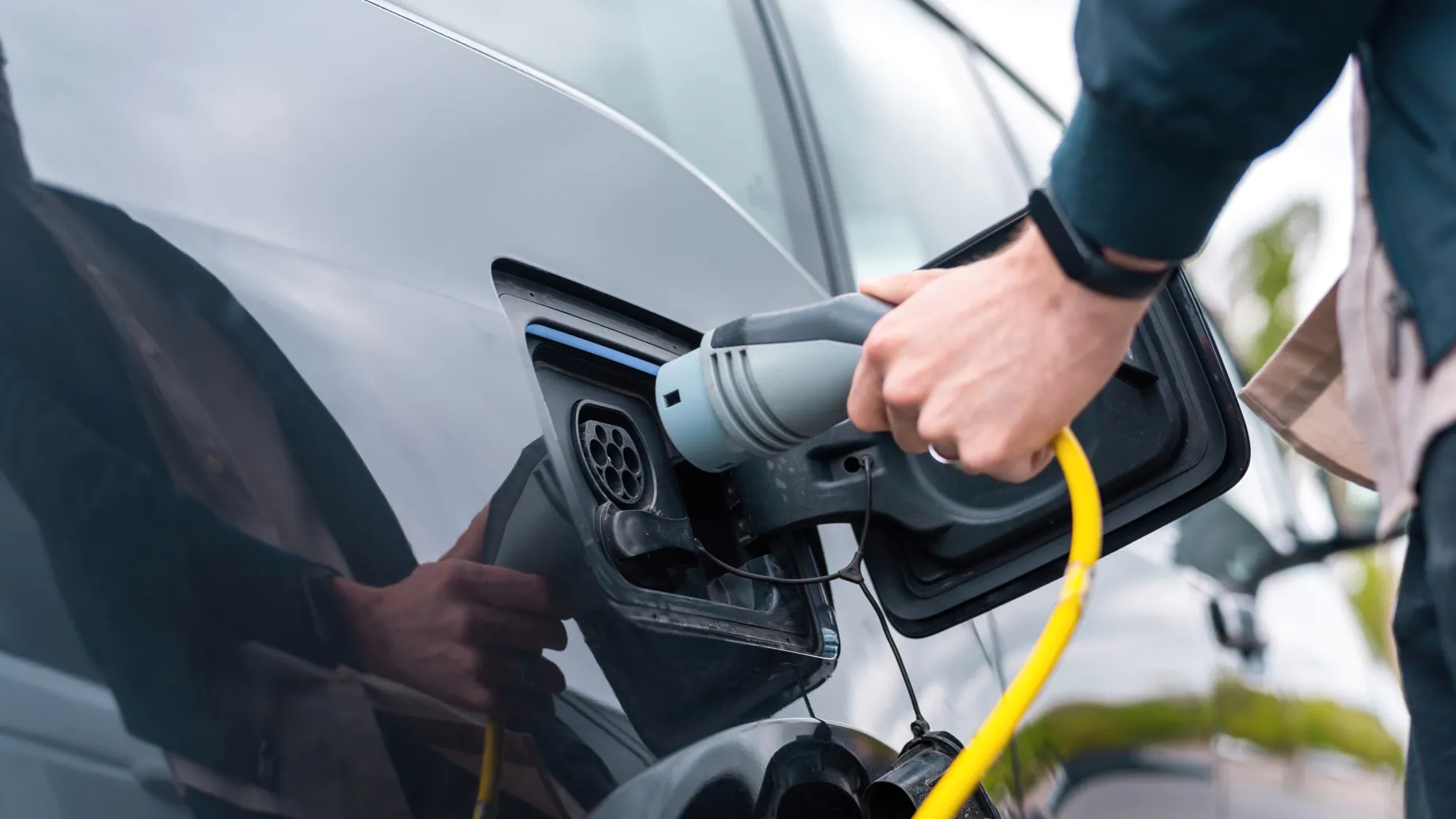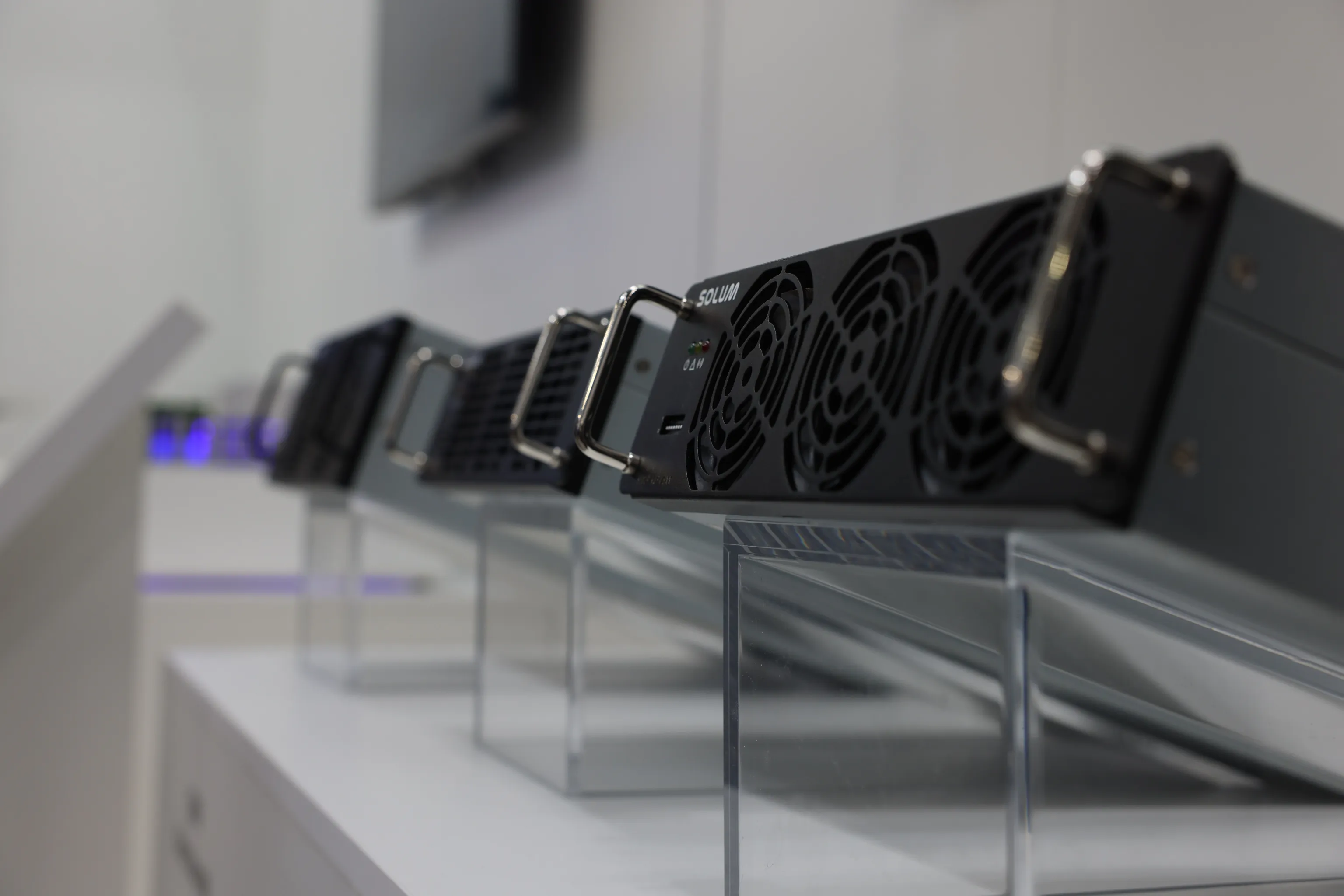E-mobility 101: Different Types of EV Chargers
Before you purchase or use your own electric vehicle, have you taken the time to consider that there are many types of EV chargers?
Since EVs, or electric vehicles, rely on electricity rather than gasoline, EV chargers should be a big factor in your buying process and decisions. They will power your car and ensure that you get to your destination every time. But EV chargers, like the ones from SOLUM Group, aren't as simple as they seem. You need more information about them to ensure that you will experience the full potential of your electric vehicle.
What are EV Chargers?
Electric vehicle chargers, also known as EV chargers, are devices designed to provide electrical energy to recharge the batteries of electric vehicles (EVs). They are the equivalent of fuel pumps for gasoline-powered vehicles. Instead, they are used to replenish the energy storage of electric cars, electric buses, electric trucks, and other EVs. EV chargers come in various types, connection types, and even charging speeds to cater to the different charging needs of each EV and its owner.
EV chargers usually consist of several components, including:
- Charging Station: The physical structure that houses the charging equipment. It includes the power supply, connectors, and sometimes additional features found in public chargers, like user interfaces, payment systems, and data communication capabilities.
- Charging Equipment: The internal electronics responsible for converting the electrical energy from the power source into a suitable form for charging the vehicle's battery. This equipment includes power conversion components, safety features, and communication interfaces.
- Connector: The interface that physically connects the charging station to the EV. Connectors can vary based on the type of charger and the region's charging standards.
- Cables: The cables that connect the charging station to the electric vehicles. These cables deliver the energy needed for electric vehicle charging.
What are the different types of EV chargers?
There are various EV chargers that can be found or installed in residential homes, commercial spaces, public areas, and charging stations. Here are the main types of EV chargers:
Home charger
A home charger is one of the many EV charger types available on the market. Having a home charger is essential for keeping your EV charged and road-ready. Home chargers come in a variety of styles and features, from basic wall-mounted units to more advanced units that provide faster charging speeds.
Basic home chargers are typically capable of charging an electric car at a rate of up to 3kW, while more advanced units can charge at rates of up to 22kW. Home chargers also come in a range of connections, including type 1, type 2, and CCS, so it's important to check your car’s charging port before purchasing.
Fast public charger or rapid charger
Fast public EV chargers, or rapid chargers, are one of the many types of EV chargers available today. They are designed to quickly charge EVs in public areas, such as parking lots, shopping malls, commercial charging stations, and gas stations.
Fast public chargers usually provide more power than standard EV chargers, allowing users to charge their vehicles faster. Public charging stations tend to be more powerful than residential or workplace chargers. They can charge up to 50 kW or even higher, and allow for 60 to 100+ miles of range in as little as 20-30 minutes. As a result, users can significantly reduce their charging times, sometimes getting to full charge in as little as an hour.
Tesla Destination Charger
While Tesla vehicles can use standard fast-charging Level 2 chargers, Tesla also has its own network of destination chargers. These are Level 2 chargers specifically designed for Tesla vehicles and are often installed at hotels, restaurants, resorts, and other destinations with public charging. Tesla is the leading EV manufacturer in the world, with over a $580 billion market cap. It's no surprise that they would have their own reliable charger type for Tesla EVs.
Typical features include a high charging capacity, which helps reduce the amount of time it takes to charge your vehicle, as well as an overcharge prevention feature, which prevents your vehicle from running completely out of power. Tesla Destination Chargers are a great choice for those looking for an efficient and cost-effective way to power their Tesla electric vehicle when away from home.
What are the different EV charger connection types?
The main types of chargers we see on the market also vary in connection types. These EV charger connection types are the ones that physically connect the EV to the EV charger. As an EV owner or driver, you need to be aware of these charger connection types and make sure that you're using the one suited for your EV.
Type 1
Type 1 (SAE J1772) chargers are the most commonly used type of charger in North American countries and Japan. They're primarily used to charge smaller EV models such as the Chevrolet Spark and Fiat 500e. These chargers generally come with a single connector that provides charging at up to 6.6 kW. The Type 1 connection is a hybrid connector that can work with both single- and three-phase systems and can be used with alternating current (AC) or direct current (DC). Though Type 1 chargers may not provide the fastest charging speed, they are usually the most economical option.
Type 2
Type 2 (IEC 62196) EV charger connector types are the standard type of universal plugs commonly used in Europe, Australia, New Zealand, and China. To recognize a Type 2 EV charger, they will typically have a single-phase socket, often with a circular "Mennekes" style plug. The majority of current electric vehicles have the ability to utilize the Type 2 plug, making it a popular and versatile choice for electric vehicle owners. The EV charging station will offer an assortment of outlets, with Type 2 being one of the most popular on the market today.
Tesla Supercharger Connector
The Tesla Supercharger is Tesla's own proprietary connector type for EV chargers. It connects to various Tesla vehicles, including the Tesla Model S, Model 3, Model X, and Model Y to offer the best EV charging experience.
The Tesla Supercharger has a unique connector that locks in place like a plug and socket, ensuring a secure connection for charging. The connector has 8 pins and is designed to be self-sealing to protect the EV from moisture and dust. Capable of providing up to 250 kW of power and designed for high-power DC fast charging, the Tesla Supercharger is one of the most powerful EV chargers available. Additionally, the Tesla Supercharger can charge an EV up to 80% in 30 minutes, significantly faster than other types of EV chargers.
CHAdeMO
CHAdeMO, which is an abbreviation for Charge de Move, is a quick charging system developed by the Tokyo Electric Power Company. CHAdeMO has the ability to charge EVs at high rates, usually up to 50 kW. Due to this fast charging rate, it has become one of the most popular quick-charging systems in the world. It is especially prevalent in Japan and Europe, and among Asian EV manufacturers.
CCS (Combined Charging System)
Developed by the SAE International organization, CCS provides access to high-power charging in a universal charging system, allowing for a much faster charge than many of the other EV charger connection types. This system is most commonly seen on electric vehicles manufactured in the U.S. and Europe. It allows for two different types of charging: AC charging and DC charging.
DC charging is available in a variety of different power levels, from 30kW up to 350kW, so it is well suited for a wide variety of charging needs. AC charging is usually available at 7kW and it is usually only used daily or for topping off a charge. CCS is a popular option for EV drivers and is becoming increasingly available across the globe.
What are the different types of EV charger levels or speeds?
When it comes to charging speeds, different types of EV chargers can be classified into slow chargers and fast chargers. Level 1 and Level 2 are known for slow charging. And Level 3 is known as the EV fast charger or rapid charger. Here is a quick rundown of EV charger speeds:
Level 1 Charging
Level 1 charging is known as the slowest type of EV charging and is generally used in a standard 110V or 115V plug-in outlet. This type of EV charger takes 8 to 12 hours to completely charge a vehicle and converts the current into a usable flow of alternating current (AC) power to charge the EV’s batteries.
Level 1 charging is a common option when it comes to home charging. It's also a great option for those who live in areas with limited access to a dedicated high-powered charging station, but do not need to charge their vehicle in a hurry.
Level 2 Charging
Level 2 charging is the most common type of public EV charger found across the United States. It offers electric car charging rates up to 25 miles of range per hour, which is suitable for users who need to top off their battery in a hurry and can use the charger for a relatively short amount of charge time. In fact, it can charge EVs in as little as 4-10 hours.
It is the most common type of EV charger available in public parking lots, such as supermarkets, shopping centers, and car dealerships. This means that it is a great way to conveniently charge your electric vehicle on the go. Level 2 chargers are relatively affordable, making them an attractive option for commercial and residential use.
Level 3 Charging (DCFC)
Level 3, also known as DCFC or DC fast charging, is a type of EV charger that can power up your electric vehicle in a fraction of the time compared to Level 1 or Level 2. This type of rapid charging can be found in most public places, such as shopping malls, grocery stores, public parking lots, and more.
With Level 3 charging, you can add up to 100 miles of range in as little as 30 minutes up to an hour. This is much faster compared to Level 1 or Level 2 chargers. For this reason, Level 3 chargers are becoming increasingly popular for those who need a quick power boost for their electric vehicle when they’re on the go.
SOLUM EV Charger for specific charging needs
SOLUM Group has developed EV chargers for your specific charging needs. Whether you need rapid charging to fit your fast-paced lifestyle, or you need a slow, economical charger for your easygoing behavior, there is a SOLUM EV Charger for you.
SOLUM Fast Chargers are ideal, high-powered charging solutions for various kinds of EVs. Its efficient charging capabilities allow for fast and versatile charging for individual drivers, commercial property owners, business owners, and more. Here are some of its features:
- Fast Charging Technology
- Universal Compatibility
- User-Friendly Interface
- Robust and Durable
- Advance Safety Features
- Easy Installation
- Eco-friendly Power Consumption Technology
- Smart Charging
Meanwhile, SOLUM Slow Chargers are made for safe, reliable charging and longer running. They present a convenient and cost-effective solution for homeowners and business owners alike. Here are some of its features:
- Customizable Charging Speed
- Weather-resistant Design
- User-friendly Interface
- Advance Safety Features
- Easy Installation and Maintenance
- Precise Voltage and Current Accuracy
- Compact and Versatile Design
The next time you visit a public charging station or look for your own home EV charger, keep these in mind so you can choose the best EV charger that will power your vehicle.
SOLUM Marketing
Category
Keywords











